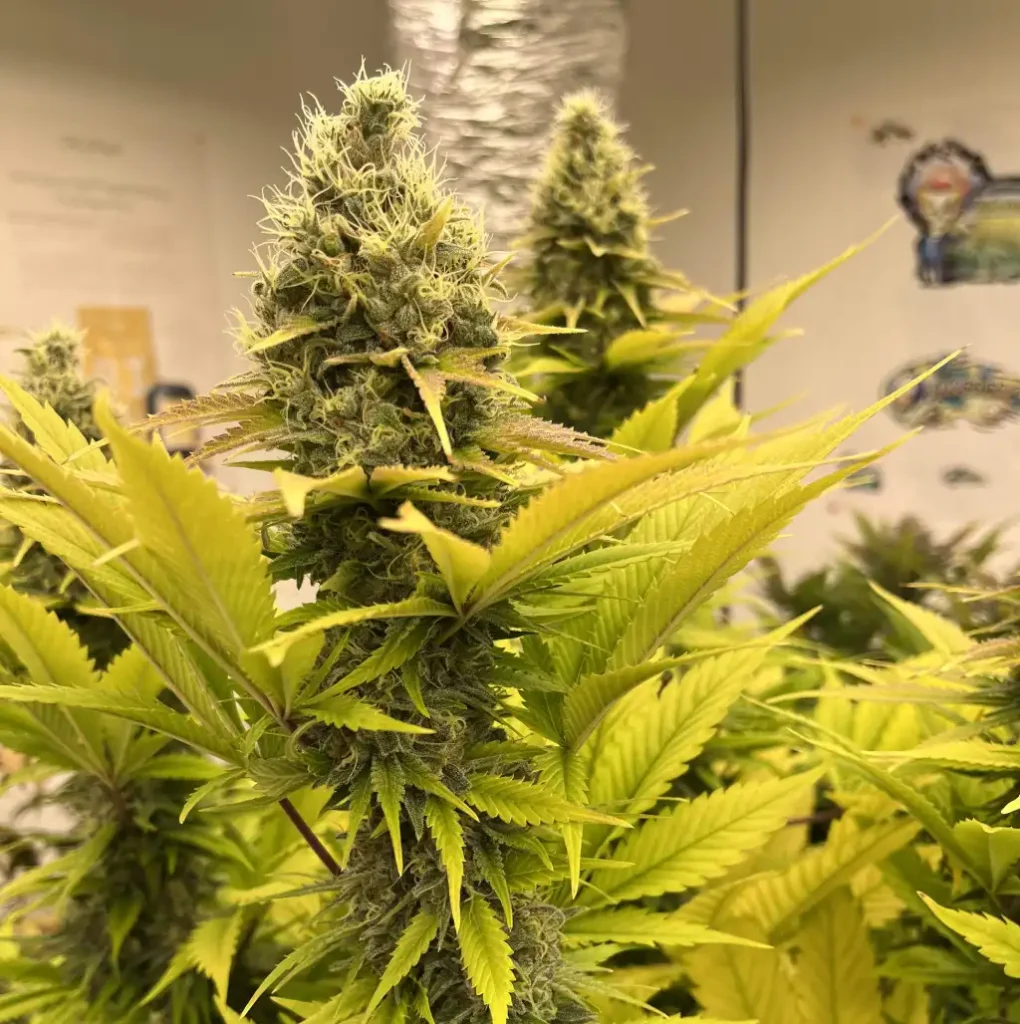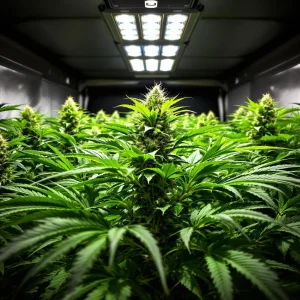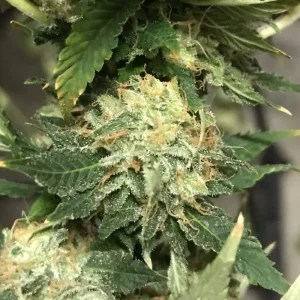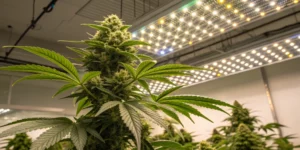Exceptional Genetics and Effects
The Church Strain is a remarkable hybrid cannabis variety that boasts a genetic lineage combining Swiss sativa, Skunk, Super Skunk, and Northern Lights. This unique combination creates a strain celebrated for its balanced effects and robust growth characteristics. With a THC content averaging 16-20%, The Church Strain delivers a versatile high, offering both cerebral stimulation and physical relaxation.
The strain’s effects make it popular among recreational and medical users. It provides an uplifting euphoria paired with a calming body high, making it suitable for stress relief, pain management, and creative pursuits. Additionally, its distinctive flavor profile features earthy, floral, and citrus notes, making it a treat for the senses.
Environmental Requirements for Growing The Church Strain
The Church Strain thrives in a variety of environments but performs exceptionally well in climates with moderate temperatures. Whether grown indoors or outdoors, this strain requires a stable environment to maximize its potential.
- Temperature: Maintain temperatures between 70-80°F (21-27°C) for optimal growth.
- Humidity: Keep relative humidity between 40-50% during the flowering phase to prevent mold and mildew.
Due to its Skunk lineage, The Church Strain is known for its resilience against pests and diseases, making it an excellent choice for novice growers. However, it’s essential to monitor environmental factors closely to avoid stress-related issues.
Setting Up The Growing Cannabis Space
Creating an optimal grow space for The Church Strain involves attention to detail and proper planning. Whether growing indoors or outdoors, the setup will significantly impact the final yield and quality of the buds.
Indoor Setup
For indoor cultivation, a controlled environment is crucial. Equip your grow space with high-quality grow lights, such as LED or HPS, to provide sufficient light intensity. The Church Strain requires a light cycle of 18/6 during the vegetative phase and 12/12 during flowering.
- Grow Medium: Choose between soil or hydroponics, depending on your preference and experience level.
- Ventilation: Ensure proper airflow with fans and exhaust systems to maintain consistent temperature and humidity levels.
Outdoor Setup
Outdoor growers benefit from The Church Strain’s adaptability to various climates. Plant it in nutrient-rich soil with access to ample sunlight. Choose a location with good airflow and natural protection from heavy rain to prevent mold development.
- Planting Season: For best results, plant The Church Strain in late spring to take advantage of long daylight hours.
- Pest Control: While naturally resistant to many pests, using organic pest control methods can provide additional protection.
Indoor Cannabis Cultivation
Indoor cultivation of The Church Strain offers growers full control over environmental factors, resulting in consistent yields and high-quality buds. Here are essential considerations:
- Lighting: Use full-spectrum LED lights to mimic natural sunlight. Place lights 18-24 inches above the canopy to avoid light burn.
- Training Techniques: Apply low-stress training (LST) or the Sea of Green (SOG) method to maximize light exposure and boost yields.
Monitor nutrient levels and pH regularly to prevent deficiencies or nutrient lockout. The Church Strain’s compact structure makes it ideal for small indoor spaces, allowing growers to achieve impressive yields even in limited areas.
Outdoor Cannabis Cultivation
Outdoor cultivation of The Church Strain can yield impressive results, especially in regions with favorable climates. The strain’s robust genetics make it resilient to environmental challenges, but proper care is still essential.
- Sunlight: Ensure plants receive at least 6-8 hours of direct sunlight daily for optimal growth.
- Soil Preparation: Enrich the soil with organic compost or fertilizers to support vigorous development.
Prune and trim the plants regularly to improve airflow and prevent mold. Outdoor-grown Church Strain plants can reach impressive heights, producing abundant buds with a rich terpene profile.
Propagation and Germination of The Church Strain
The first step in growing The Church Strain successfully is ensuring proper propagation and germination. This sets the foundation for strong and healthy plants.
Germination Techniques
The Church Strain’s seeds can be germinated using various methods. The most common is the paper towel method. Place the seeds between two damp paper towels, ensuring they remain moist but not soaked. Store the paper towels in a dark, warm place, such as inside a cupboard, for 2–3 days. Once the seeds sprout a taproot, they’re ready for planting.
For growers seeking a more automated approach, seedling trays or rapid rooters are also excellent options. These tools provide a stable environment for germination, reducing the risk of handling errors. Whichever method you choose, ensure consistent moisture and warmth to achieve high germination rates.
Transplanting Seedlings
Once the seedlings develop their first set of true leaves, it’s time to transplant them into their growing medium. For soil grows, use nutrient-rich, well-draining soil in small pots to give the roots room to expand. For hydroponic systems, transfer the seedlings to their net pots and provide a gentle nutrient solution.
During this stage, The Church Strain’s young plants are sensitive to overwatering and excessive light. Use low-intensity grow lights and water sparingly to avoid stunting their development.
Vegetative Phase of The Church Strain
The vegetative phase is when The Church Strain focuses on building a robust structure, setting the stage for high yields.
Growth Requirements
During this stage, the plants require 18–24 hours of light daily. LED grow lights are ideal for providing full-spectrum light while maintaining energy efficiency. Maintain a temperature range of 70–80°F (21–26°C) and relative humidity between 50–70%.
Nitrogen-rich fertilizers play a key role during the vegetative phase. Use a balanced nutrient solution with an emphasis on nitrogen to support leafy growth. Monitor the pH of the soil or nutrient solution, ensuring it remains between 6.0 and 6.5 for soil and 5.5 and 6.0 for hydroponic systems.
Training Techniques
To maximize yields, apply training methods such as topping or low-stress training (LST). Topping involves removing the plant’s main growth tip to encourage lateral branching, leading to multiple colas. LST involves gently bending and tying down branches to improve light penetration and airflow.
Defoliation is another useful technique for The Church Strain. Removing excess fan leaves ensures that light reaches the lower parts of the plant, boosting overall growth.
Flowering Phase of The Church Strain
The flowering phase is when The Church Strain begins to develop its signature buds, characterized by their dense structure and rich aroma.
Light Schedule and Environment
Switch the light schedule to 12 hours on and 12 hours off to trigger flowering. Maintain temperatures between 65–75°F (18–24°C) and reduce humidity to 40–50% to prevent mold and mildew. Ensure good air circulation to keep the buds healthy and free from excess moisture.
The Church Strain typically flowers within 8–10 weeks. During this period, closely monitor the plants for any signs of nutrient deficiencies or pest infestations.
Feeding During Flowering
Reduce nitrogen levels and increase phosphorus and potassium to support bud development. Use a bloom-specific fertilizer to meet these needs. Avoid overfeeding, as nutrient burn can compromise the quality of the buds. Flush the plants with plain water during the final two weeks to enhance the strain’s flavor and aroma.
Cannabis Fertilization and Nutrition – The Church Strain
Feeding The Church Strain properly throughout its lifecycle ensures robust growth and abundant yields.
Key Nutrients
The Church Strain thrives on a balanced diet of macronutrients, nitrogen (N), phosphorus (P), and potassium (K). During the vegetative phase, emphasize nitrogen to promote leafy growth. Shift to a phosphorus- and potassium-rich formula during flowering to support resin production and bud density.
Micronutrients such as calcium, magnesium, and sulfur are equally important. These elements strengthen cell walls, improve nutrient uptake, and boost overall plant health. Use supplements like Cal-Mag to address any deficiencies.
Nutrient Delivery Methods
Both soil and hydroponic systems can deliver nutrients effectively. For soil grows, use organic fertilizers or pre-amended soil blends for consistent nutrient release. For hydroponics, ensure the nutrient solution is well-aerated and free from sediment.
Regularly monitor the pH and electrical conductivity (EC) levels to avoid nutrient lockout. Keeping pH levels within the recommended range ensures optimal absorption of essential elements.
Pest and Disease Control for Cannabis Growing
Keeping The Church Strain healthy requires diligent pest and disease management. Preventative measures and early intervention are key to a successful harvest.
Common Pests
The most common pests affecting cannabis include spider mites, aphids, and fungus gnats. Inspect plants regularly for signs of infestation, such as yellowing leaves, webbing, or visible insects. Use natural pest control methods like neem oil or insecticidal soap to address these issues.
Disease Management
Powdery mildew and root rot are common diseases in cannabis cultivation. Prevent powdery mildew by maintaining proper airflow and keeping humidity levels in check. To avoid root rot, ensure the growing medium has good drainage and avoid overwatering.
Consider using beneficial microbes or mycorrhizal fungi to strengthen the plant’s immune system. These natural allies help protect against pathogens while promoting healthy root development.
Growing Prevention Corrective Actions
Successful cultivation of The Church Strain requires consistent monitoring and timely intervention strategies to mitigate common challenges. Proper prevention and corrective actions not only ensure healthy plants but also lead to higher yields and better-quality buds.
Correcting Overwatering and Underwatering
Overwatering is a common issue among novice growers and can result in root rot and oxygen deprivation. To address this, allow the soil to dry between watering and ensure pots have proper drainage. Monitor plants for signs of overwatering, such as yellowing leaves, drooping stems, or a soggy medium. Adjust your watering schedule to balance the moisture levels effectively.
Underwatering, on the other hand, leads to wilted plants with stunted growth and reduced bud production. Correct this by watering thoroughly but not excessively. Ensure that the water reaches the root zone without pooling. Consistently check the soil moisture level with a moisture meter or by feeling the topsoil to avoid recurrence.
Addressing Nutrient Deficiencies
Nutrient deficiencies often manifest as discoloration, slow growth, or malformed leaves. A lack of nitrogen, for example, causes yellowing of older leaves, while potassium deficiency may result in brown edges. Address these issues by performing a soil test to identify specific imbalances.
Correct deficiencies with a balanced fertilizer tailored for cannabis, rich in nitrogen, phosphorus, and potassium. If the problem arises from nutrient lockout due to pH imbalance, flush the soil with clean, pH-balanced water and reintroduce nutrients gradually. Maintaining a pH range of 6.0 to 6.5 ensures optimal nutrient absorption and overall plant health.
Harvesting and Curing for Cannabis Growing
Harvesting and curing are the final steps in cultivating The Church Strain, crucial for preserving its flavor, aroma, and potency. Following the right techniques ensures a premium-quality product that highlights the strain’s best attributes.
Harvesting
The ideal time to harvest The Church Strain is when the trichomes turn from clear to cloudy, with a few showing amber hues. This indicates peak cannabinoid levels. Use a jeweler’s loupe or magnifying glass to inspect trichomes on the buds.
When ready, cut the branches carefully with sterilized scissors to avoid damaging the resin-rich trichomes. Remove larger fan leaves and trim excess sugar leaves while keeping the delicate trichomes intact. Handle buds gently throughout the process to preserve their quality.
Curing
After drying the buds in a controlled environment (60-70°F and 50-60% humidity) for 7-10 days, transfer them to airtight glass jars for curing. Open the jars daily during the first week to release moisture and prevent mold growth. Gradually reduce opening frequency as the buds stabilize. Curing improves the terpene profile, smoothens the smoke, and enhances the potency of The Church Strain. Allow the buds to cure for at least two weeks, but for the best results, extend the curing period to 4-6 weeks.
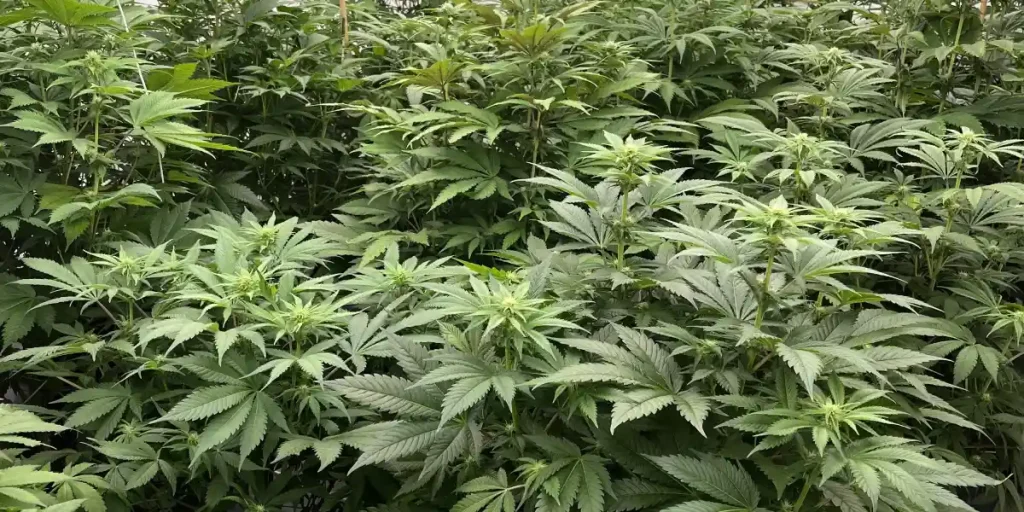
Is The Church Strain Indica or Sativa?
The Church Strain is a balanced hybrid that leans slightly towards indica dominance. This unique genetic blend offers a combination of physical relaxation and mental stimulation, making it versatile for various uses.
The indica traits of The Church Strain deliver a calming body high, ideal for easing physical discomfort, stress, and insomnia. Meanwhile, its sativa influence contributes uplifting and energizing effects, enhancing creativity and focus without causing excessive sedation.
Advantages of Growing The Church Strain
The Church Strain is highly regarded among cultivators for its robust traits and rewarding yields. These advantages make it a top choice for both beginners and experienced growers.
High Resistance to Mold and Pests
One of the standout features of The Church Strain is its natural resilience against mold and pests. This makes it especially suitable for humid climates where mold is a common issue. Its robust genetics reduce the need for intensive pest control measures.The natural resistance of The Church Strain ensures healthier plants with minimal intervention, saving growers time and effort. This trait is particularly valuable for outdoor cultivation, where environmental variables are harder to control.
Generous Yields
Under optimal growing conditions, The Church Strain produces exceptionally high yields. Indoor growers can achieve up to 800 grams per square meter, while outdoor plants often exceed this, depending on the environment. Such productivity makes it a profitable choice for both personal and commercial cultivation.
The impressive yield potential of The Church Strain ensures that growers are rewarded with a bountiful harvest. This strain is especially appealing to commercial cultivators looking for a high-return crop.
Disadvantages of Growing The Church Strain
Despite its many strengths, The Church Strain presents certain challenges that growers must navigate to achieve the best results.
Longer Flowering Period
With a flowering period of 9-10 weeks, The Church Strain requires more patience compared to faster-maturing strains. This longer timeline demands careful planning and attention to detail throughout the growth cycle to maximize yield and potency.
The extended flowering period can be challenging for growers seeking a quick turnaround. However, the superior quality and abundant yield of the final product often justify the extra time and effort.
Nutrient Sensitivity
The Church Strain is somewhat sensitive to overfeeding, particularly during the vegetative stage. Excess nutrients can cause leaf burn or nutrient lockout. To avoid this, start with a low nutrient concentration and gradually increase as the plant demonstrates tolerance.
Careful monitoring of nutrient levels is essential to prevent overfeeding. Regularly check for signs of nutrient stress and adjust the feeding schedule accordingly to maintain healthy growth.
Problems in Cultivating The Church Strain
While generally resilient, The Church Strain is not without its potential pitfalls. Recognizing and addressing these problems early ensures a smoother growing experience.
Pest Infestations
Though resistant to many common pests, The Church Strain can still be affected by aphids, spider mites, and whiteflies. Regularly inspect the plants, especially the undersides of leaves, for signs of infestation. If pests are detected, apply organic pest control solutions such as neem oil, insecticidal soap, or biological controls.
Preventive measures, such as maintaining a clean growing space and using sticky traps, can help minimize the risk of pest infestations. Early detection and treatment are key to preventing widespread damage.
Environmental Stress
Fluctuations in temperature and humidity can stress The Church Strain, leading to slower growth or diminished yields. Maintain a stable temperature range of 70-85°F and adjust humidity levels according to the growth stage. Proper ventilation and consistent monitoring help prevent environmental stress. Implementing automated climate control systems can significantly reduce the risk of environmental stress. These systems ensure optimal growing conditions throughout the plant’s life cycle.
Advanced Pest Control for Cannabis Growing
For persistent pest issues, advanced pest control techniques can safeguard The Church Strain from severe infestations.
Biological Controls
Introducing predatory insects, such as ladybugs, lacewings, or predatory mites, is an effective and eco-friendly way to manage pest populations. These beneficial insects naturally prey on harmful pests without causing damage to the plants.
Biological controls are an excellent alternative to chemical pesticides, ensuring a safer, more sustainable growing environment. They also help maintain the natural balance of the ecosystem within the grow space.
Integrated Pest Management (IPM)
Integrated Pest Management combines preventive measures, cultural practices, and targeted treatments. This approach includes rotating pest control products to avoid resistance and maintaining a clean growing space to reduce pest habitats. Regular monitoring and prompt action are key components of a successful IPM strategy.
The holistic nature of IPM ensures long-term pest control while minimizing environmental impact. By integrating multiple strategies, growers can effectively protect The Church Strain from pests and maintain a healthy crop.
Similar Strains to The Church Strain
Original Afghan Kush Auto
- Effects: Original Afghan Kush Auto is a pure indica strain known for its deeply sedative effects. It’s perfect for nighttime use, offering relief from pain, stress, and insomnia. Its powerful body high helps users unwind after a long day.
- Why Similar: Original Afghan Kush Auto shares The Church Strain’s relaxing and therapeutic effects, making it an excellent alternative for those seeking physical relief.
- Growing Characteristics: This strain is highly resilient and thrives in various environments, similar to The Church Strain. Its short flowering time of 7–8 weeks is advantageous for growers looking for a quicker harvest.
Jack Herer
- Effects: Jack Herer is a sativa-dominant hybrid known for its uplifting and energizing effects. It provides mental clarity and a creative boost, making it ideal for daytime use.
- Why Similar: While The Church Strain leans towards indica, Jack Herer offers complementary uplifting effects that pair well with The Church’s relaxing properties.
- Growing Characteristics: Jack Herer grows well both indoors and outdoors, requiring moderate care. It has a flowering period of 8–10 weeks and produces generous, resinous buds.
Blueberry
- Effects: Blueberry is a balanced hybrid with sweet, fruity flavors and calming effects. It’s widely praised for its ability to reduce stress and provide a euphoric high.
- Why Similar: Like The Church Strain, Blueberry is valued for its relaxing effects and flavorful terpene profile, offering a comparable sensory experience.
- Growing Characteristics: Blueberry is moderately easy to cultivate, with a flowering period of 8–9 weeks. It performs well in controlled indoor environments and produces dense, colorful buds.
Week-by-Week Growth Plan
Week 1: Germination
- Environment: Maintain a temperature of 70–80°F and humidity levels around 70–80%.
- Light Schedule: Use low-intensity light for 18–24 hours daily.
- Tips: Use a damp paper towel or germination kit to sprout seeds. Keep the medium moist but not waterlogged. Check for sprouts within 3–7 days.
Week 2: Seedling Stage
- Environment: Keep humidity at 65–70% and temperature at 70–75°F.
- Light Schedule: Increase light intensity slightly, maintaining an 18/6 cycle.
- Tips: Avoid overwatering to prevent damping-off. Start light feeding with a nitrogen-rich nutrient solution to promote healthy leaf development.
Weeks 3–5: Vegetative Phase
- Week 3:
- Environment: Humidity at 60–65%; temperature 70–85°F.
- Light Schedule: Full-spectrum LED lights on an 18/6 cycle.
- Tips: Begin low-stress training (LST) to encourage even canopy growth. Check for pests and ensure consistent airflow.
- Weeks 4–5:
- Environment: Humidity at 50–60%; temperature 70–80°F.
- Light Schedule: Continue 18/6 cycle with higher light intensity.
- Tips: Prune lower leaves to improve airflow. Gradually increase nitrogen levels and introduce calcium and magnesium supplements.
Weeks 6–7: Pre-Flowering
- Environment: Humidity at 45–50%; temperature 70–80°F.
- Light Schedule: Shift to a 12/12 cycle to trigger flowering.
- Tips: Watch for pre-flowers and remove any males if growing from regular seeds. Gradually switch to bloom-focused fertilizers with higher phosphorus and potassium.
Weeks 8–11: Flowering Phase
- Week 8:
- Environment: Humidity at 40–45%; temperature 68–78°F.
- Light Schedule: Maintain 12/12 cycle with consistent light intensity.
- Tips: Avoid overwatering to prevent bud rot. Introduce bloom nutrients and supplements for terpene enhancement.
- Weeks 9–10:
- Environment: Humidity at 40%; temperature 65–75°F.
- Light Schedule: Continue 12/12 light cycle.
- Tips: Monitor trichomes with a loupe; they should start turning cloudy. Remove yellowing leaves to focus energy on bud development.
- Week 11:
- Environment: Maintain humidity at 40% and reduce watering frequency.
- Light Schedule: Maintain 12/12 cycle but reduce light intensity slightly in the last few days to mimic natural ripening.
- Tips: Flush the soil with pH-balanced water to remove nutrient residues. Look for trichomes turning amber to decide on harvest time.
Week 12: Harvest and Drying
- Environment: Drying conditions should be 50–60% humidity and temperature of 60–70°F.
- Light Schedule: Dry buds in darkness to preserve terpenes.
- Tips: Use sterilized scissors to cut branches and remove fan leaves. Hang branches in a dark, well-ventilated space for 7–10 days. Check for crispness on smaller stems to determine when drying is complete.
Weeks 13–16: Curing
- Environment: Store buds in airtight glass jars at 58–62% humidity in a cool, dark place.
- Light Schedule: No light exposure during curing.
- Tips: Open jars daily for the first week to release moisture, then reduce frequency. Allow buds to cure for 4–6 weeks for optimal flavor and potency.
This week-by-week plan ensures your Church Strain grows to its full potential, offering bountiful yields and premium quality. Let me know if additional details are needed for any specific stage!
FAQs About The Church Strain
What are the effects of The Church Strain?
The Church Strain provides a balanced mix of indica and sativa effects. Its indica dominance delivers deep physical relaxation, making it ideal for relieving stress, pain, and insomnia. Meanwhile, its sativa genetics add a mild cerebral buzz, promoting focus and creativity without overwhelming sedation.
How does The Church Strain compare to similar strains?
The Church Strain stands out for its mold resistance and balanced effects. Compared to Afghan Kush, it offers more uplifting sativa traits. In contrast to Jack Herer, it leans more towards relaxation. When compared to Blueberry, The Church Strain shares a flavorful profile but provides a more energizing experience.
What’s the best growing environment for The Church Strain?
The Church Strain thrives in both indoor and outdoor environments. It performs best in stable conditions with temperatures between 70–85°F and humidity levels tailored to its growth stage. Its natural resistance to mold makes it particularly suitable for humid climates.

